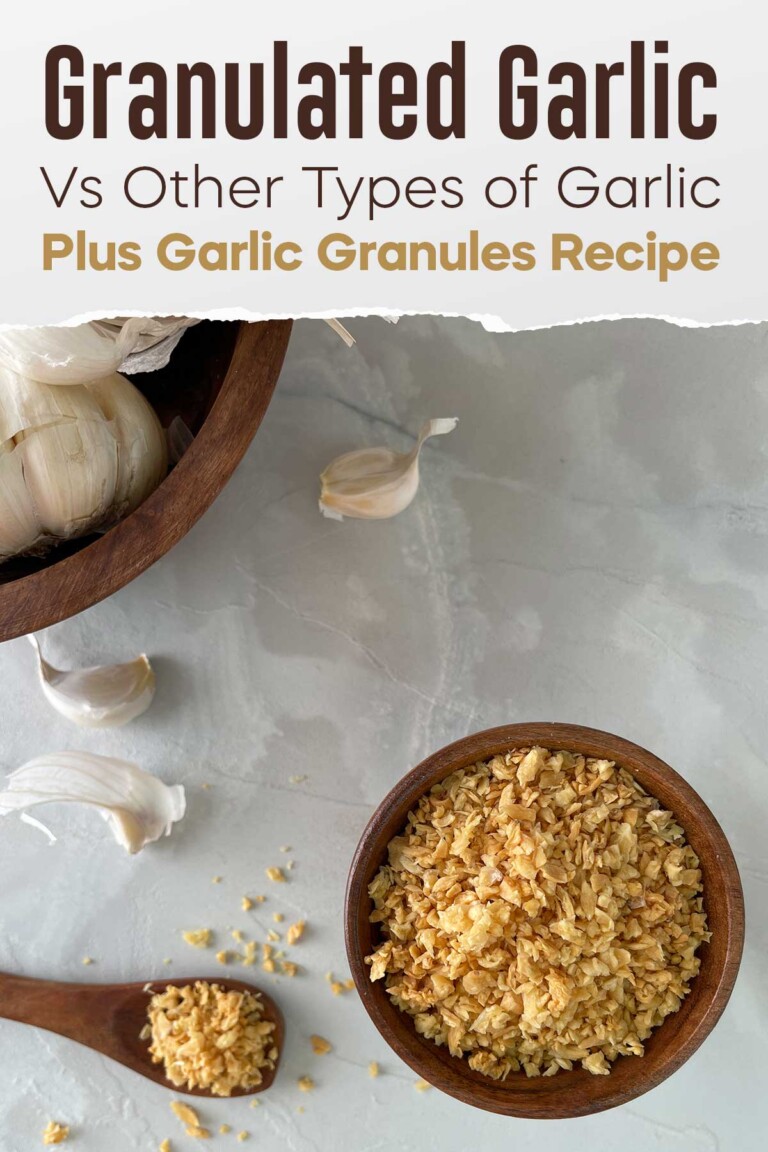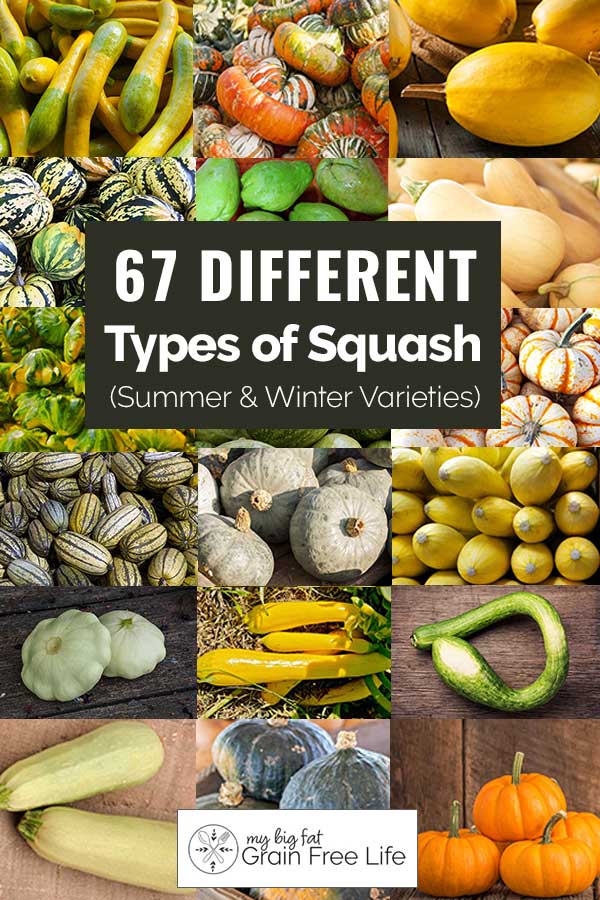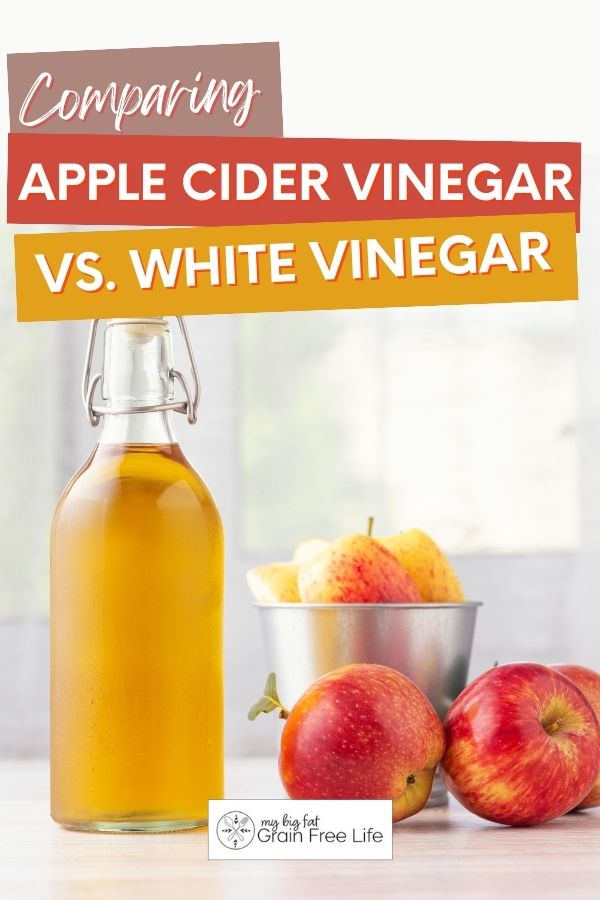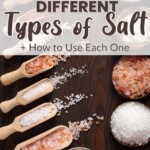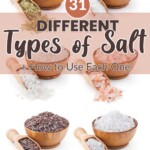31 Different Types of Salt + How to Use Each One
This post may contain affiliate links. If you make purchase after clicking a link, I may receive a commission at no extra cost to you.
Last Updated on January 10, 2024
It’s important to understand that not all salts are created equal. While salt is a staple ingredient in our kitchens, it comes in different forms and each has its own unique characteristics. By exploring the different types of salt, you can make informed choices about which ones to include in your diet.
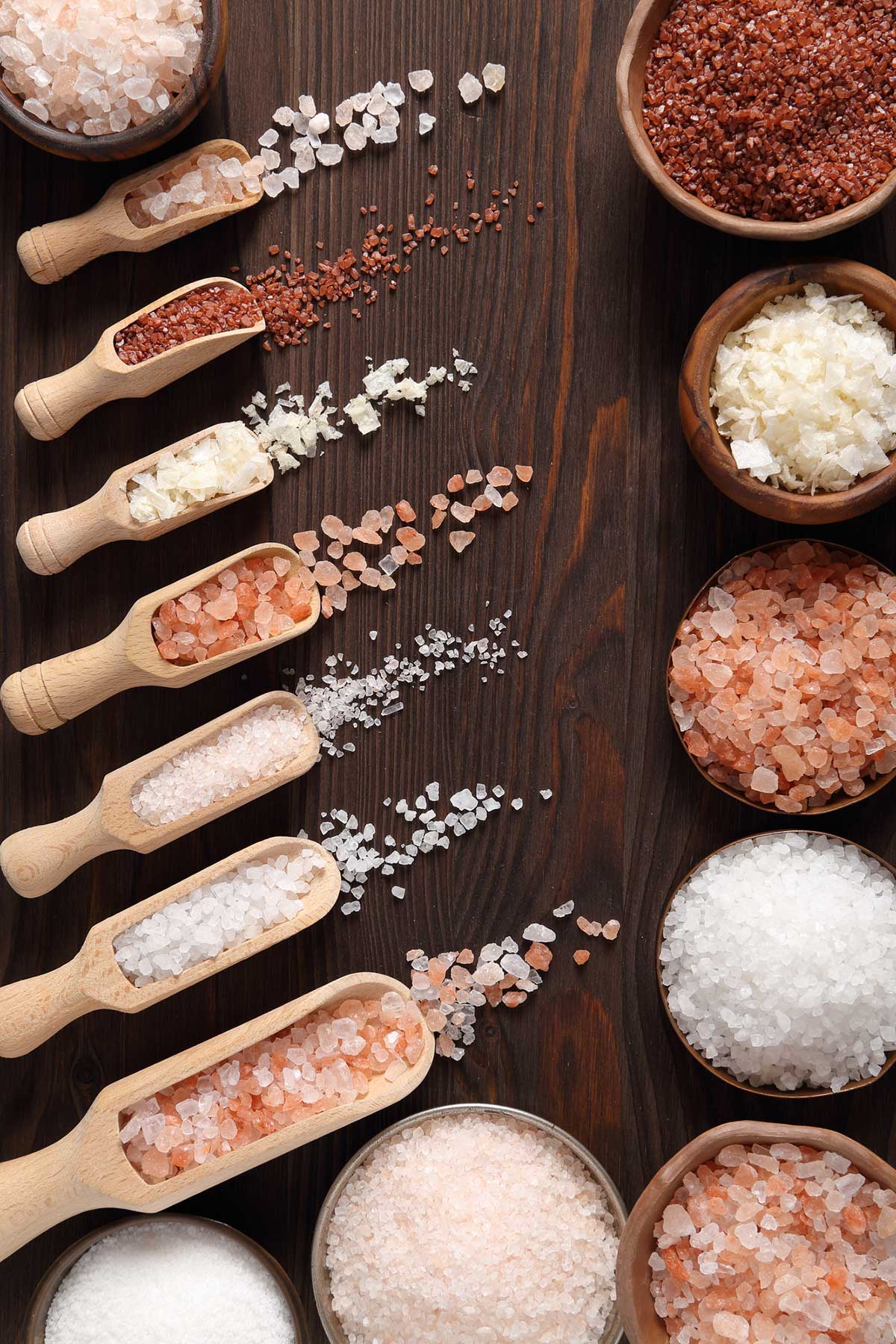
Types of Salt
When it comes to salt, there are various types available in the market. Each type has its own unique characteristics and uses. Some common types of salt include table salt, sea salt, kosher salt, and Himalayan pink salt. These different types of salt have varying textures, flavors, and minerals..
What Is Salt?
Salt is a mineral compound that is composed primarily of sodium chloride (NaCl). It is one of the most essential ingredients in cooking and food preservation.
Salt plays a crucial role in enhancing the flavor of dishes and balancing their taste. It also acts as a natural preservative by inhibiting the growth of bacteria and other microorganisms.
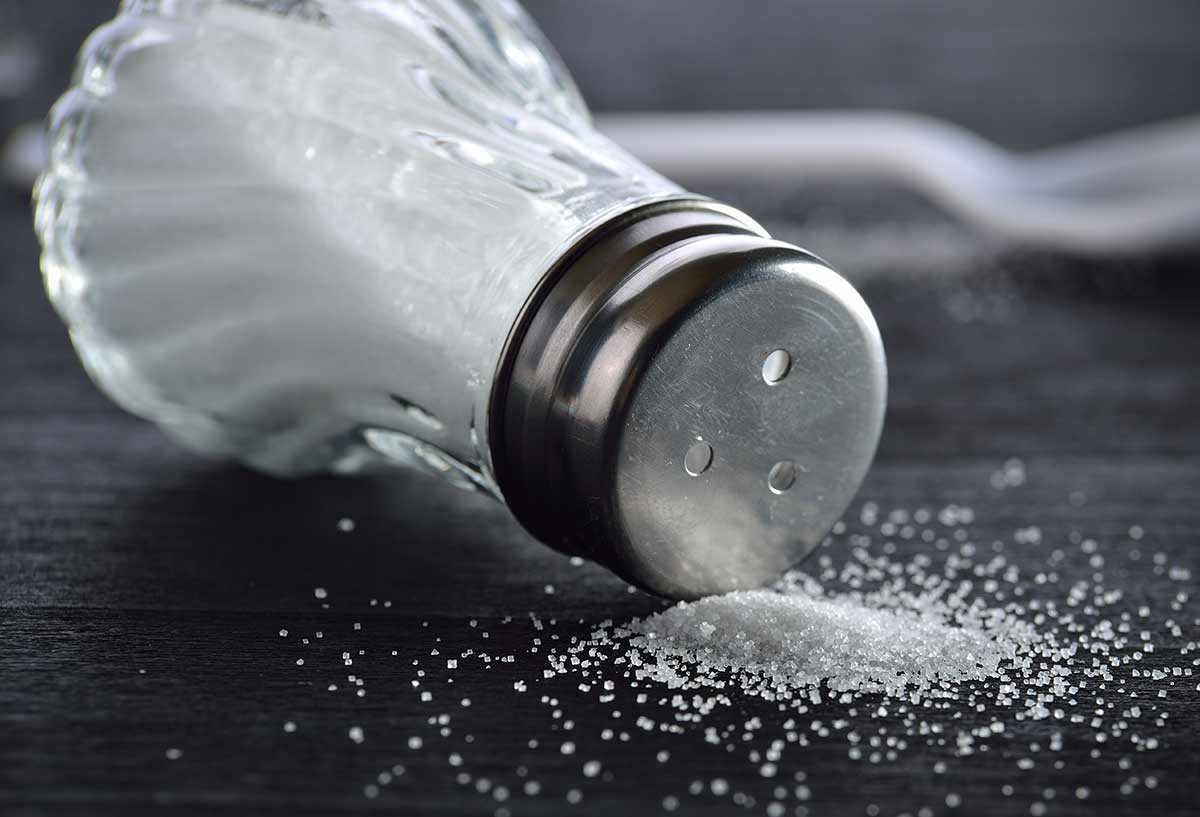
What Is Salt Used For?
Salt has been used for centuries for various purposes beyond just seasoning food. Apart from adding flavor to dishes, it is commonly used for preserving food, curing meats, and pickling vegetables.
Salt can also be used as an exfoliator in skincare routines or as a cleaning agent due to its abrasive properties.
Different Colors of Salt
One interesting aspect of salt is its varying colors. While table salt is typically white or off-white, other salts such as sea salt can come in shades of gray or even pinkish hues like Himalayan pink salt.
The color variations are often due to the presence of trace minerals found naturally in the salt sources.
Refined Vs. Unrefined Salt
Another important distinction among salts is whether they are refined or unrefined. For health reasons, choosing an unrefined salt it best.
Refined salt undergoes processing to remove impurities and may contain additives such as an anti-caking agent.
On the other hand, unrefined salt retains its natural mineral content and may have a coarser texture compared to refined varieties. Both types can be used in cooking; however, some people prefer unrefined options for their perceived health benefits.
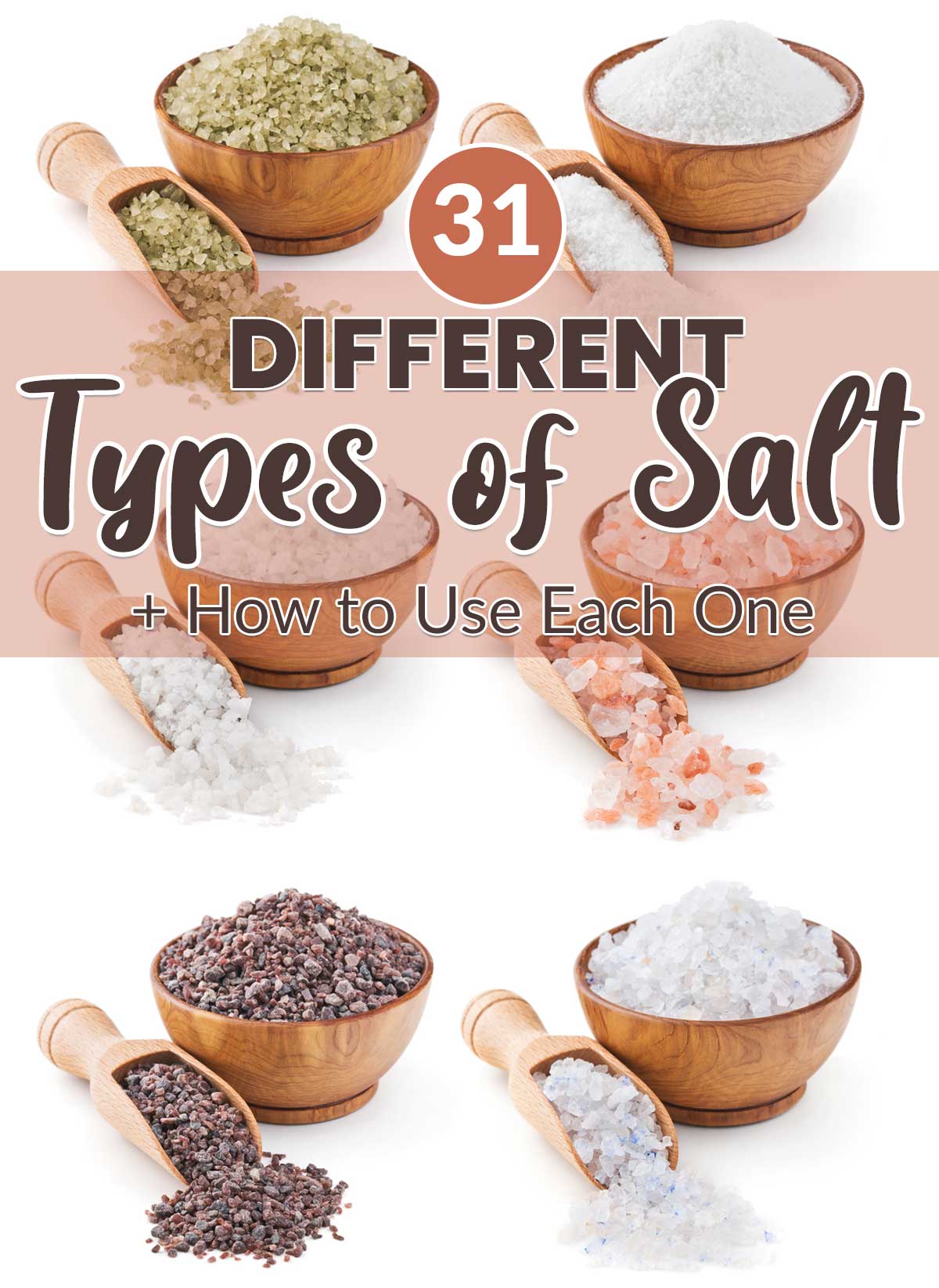
Different Types of Salt
Let’s take a look at 31 different types of salt, including their color and appearance, flavor, where it comes from, and more.
1. Table Salt
Table salt is a refined salt that is commonly used for cooking and seasoning. It has fine grains and is often iodized to prevent iodine deficiency.
- Color and appearance: Table salt is typically white and finely ground into small granules.
- Flavor: It has a strong salty taste without any additional flavors.
- Where it’s found: Table salt is widely available and can be found in most grocery stores.
- Uses: It is commonly used for cooking, baking, seasoning, and preserving food.
- Unique benefits: Table salt is often fortified with iodine, which helps support thyroid function.
2. Iodized Salt
Iodized salt is a type of table salt that has been fortified with iodine, an essential mineral for thyroid function. It helps prevent iodine deficiency disorders.
- Color and appearance: Iodized salt appears similar to regular table salt, with small grains that are usually white.
- Flavor: It has a salty taste with no distinct flavor variations.
- Where it’s found:: Iodized salt is produced by adding iodine, an essential mineral, to regular table salt.
- Uses: This type of salt is commonly used for seasoning and cooking in households worldwide.
- Unique benefits: Iodized salt helps prevent iodine deficiency.
3. Kosher Salt
Kosher salt is a coarse-grained salt that is used in koshering meat and poultry. It does not contain any additives and has a pure taste.
- Color and appearance: Coarse, irregular-shaped crystals; can be white or slightly colored depending on the source
- Flavor: Clean, pure salty taste without any additives
- Where it’s found: Widely available and not limited to any specific region
- Uses: Commonly used in Jewish cooking for koshering meat or as an all-purpose seasoning salt
4. Celtic Sea Salt
Celtic sea salt is an unrefined salt that is harvested from the coastal regions of France. It contains trace minerals and has a slightly moist texture.
- Color and appearance: Light gray color with coarse crystals.
- Flavor: Strong, briny taste with mineral undertones.
- Where it’s found: Harvested from the Atlantic coast of France using traditional methods.
- Uses: Used as both a cooking salt and finishing salt for various dishes.
- Unique benefits: Contains trace minerals such as magnesium and calcium.
5. Fleur de sel
Fleur de sel is a hand-harvested sea salt that forms as delicate crystals on the surface of seawater ponds. It is known for its delicate flavor and high mineral content.
- Color and appearance: Fleur de sel is usually off-white or pale gray in color, with a moist and fluffy texture.
- Flavor: It has a delicate and complex flavor, often described as slightly sweet and slightly briny.
- Where it’s found: Fleur de sel is primarily found in coastal regions, particularly in France.
- Uses: It is commonly used as a finishing salt to enhance the flavors of dishes just before serving.
6. Black Salt
Black salt is an unrefined rock salt that originates from India. It has a distinctive sulfurous aroma and adds a unique flavor to dishes.
- Color and appearance: Black salt has a unique pinkish-gray to purple color due to the presence of iron sulfide compounds.
- Flavor: It has a distinct sulfuric aroma and tangy flavor, often used to mimic the taste of eggs in vegan dishes.
- Where it’s found: Black salt is primarily found in South Asian countries like India, Pakistan, and Bangladesh.
- Uses: It is commonly used in chaat masala, chutneys, pickles, and various Indian dishes for its pungent flavor.
- Unique benefits: Black salt is believed to aid digestion and provide relief from bloating and heartburn.
7. Sel Gris
Sel gris, meaning gray salt in French, is an unrefined sea salt that comes from the coast of France. It has a high moisture content and contains trace minerals.
- Color and appearance: Grayish color with coarse texture.
- Flavor: Mild, briny flavor.
- Where it’s found: Originates from the coast of France.
- Uses: Used in cooking, seasoning, and finishing dishes.
- Unique benefits: Contains trace minerals like magnesium and calcium.
8. Kala Namak
Kala namak, or black salt, is an unrefined rock salt popular in Indian cuisine for its pungent aroma reminiscent of eggs or sulfur.
- Color and appearance: Pinkish-gray color with fine crystals.
- Flavor: Sulfurous, eggy flavor.
- Where it’s found: Mainly found in India and Nepal.
- Uses: Commonly used in Indian cuisine, especially for chutneys and fruit salads.
- Unique benefits: Believed to aid digestion and improve skin health.
9. Himalayan Salt
Himalayan salt is an unrefined rock salt mined from ancient sea beds in the Himalayan region. It contains trace minerals and imparts a subtle pink hue to dishes.
- Color and appearance: Pinkish hue with coarse crystals.
- Flavor: Subtle, slightly sweet flavor.
- Where it’s found: Mined from the Khewra Salt Mine in Pakistan.
- Uses: Used as a cooking salt and for seasoning various dishes.
- Unique benefits: Contains trace minerals, such as potassium and iron.
10. Himalayan Pink Salt
Himalayan pink salt refers to the same unrefined rock salt as Himalayan salt but specifically describes the pink-colored crystals.
- Color and appearance: Light pink color with medium-sized crystals.
- Flavor: Delicate, mild taste.
- Where it’s found: Same as Himalayan salt (Khewra Salt Mine).
- Uses: Used as a gourmet finishing salt or for decorative purposes on dishes like chocolate or caramel desserts.
- Unique benefits: Contains trace minerals that can support hydration and nutrient absorption.
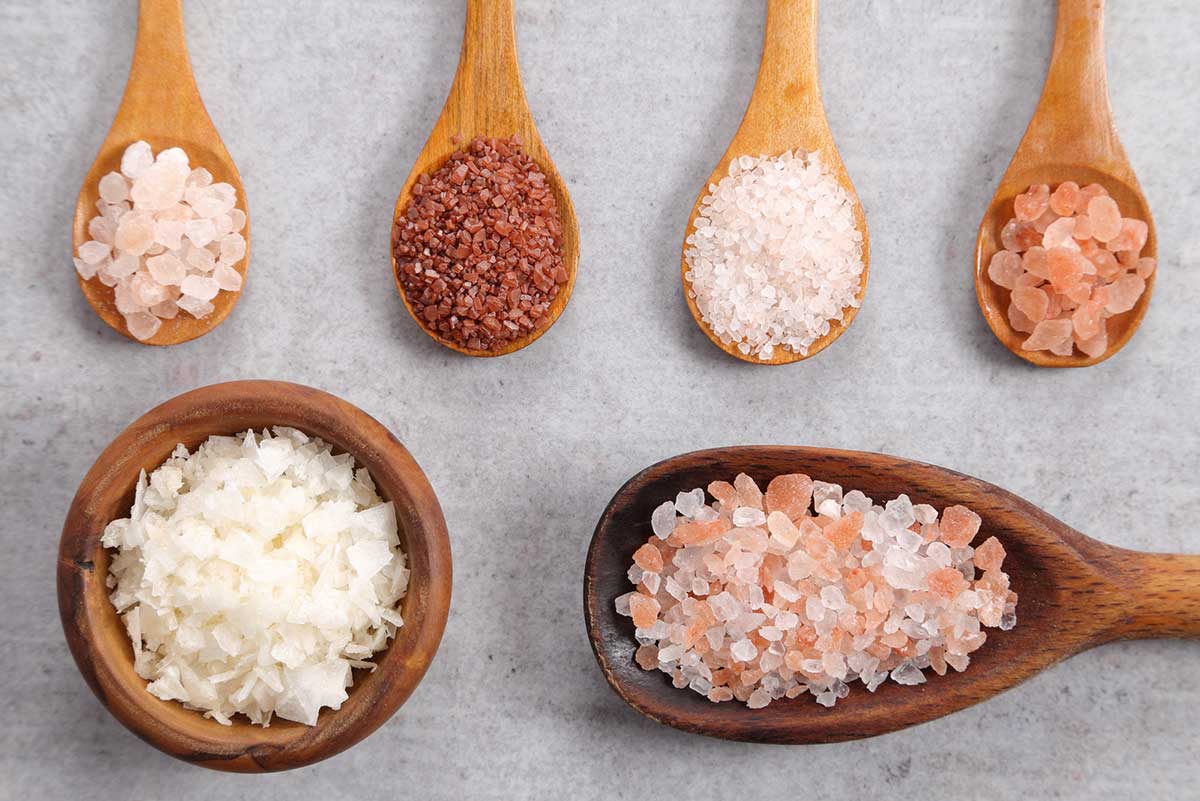
11. Diamond Crystal Salt
Diamond Crystal salt is a brand of kosher salt known for its unique pyramid-shaped crystals, which dissolve quickly and evenly.
- Color and appearance: Pure white crystalline appearance
- Flavor: Clean, pure salty taste
- Where it’s found: Produced by the Cargill Salt Company in the United States
- Uses: Versatile salt used for everyday cooking and baking.
- Unique benefits: Free from additives and is a good source of iodine.
12. Gray Salt
Gray salt, also known as sel gris, is an unrefined sea salt that has a slightly gray color due to its high mineral content.
- Color and appearance: Grayish color with medium-sized crystals.
- Flavor: Briny, slightly mineral taste.
- Where it’s found: Mainly produced in France, particularly in Guérande.
- Uses: Suitable for general cooking, seasoning, and curing meats.
- Unique benefits: Contains trace minerals like magnesium and potassium.
13. Truffle Salt
Truffle salt is a gourmet seasoning made by combining sea salt with pieces of dried truffles. It adds a rich earthy flavor to dishes.
- Color and appearance: White or black salt mixed with truffle flakes or oil.
- Flavor: Earthy truffle flavor with a hint of saltiness.
- Where it’s found: Created by infusing salt with truffle aroma or using truffle-infused oils.
- Uses: Adds an intense truffle flavor to dishes like pasta, eggs, or popcorn.
14. Flake Salt
Flake salt is a type of sea salt that forms thin, flat flakes through evaporation. It has a delicate texture and is often used as a finishing salt.
- Color and appearance: Thin, flat flakes with irregular shapes; can be white or slightly colored depending on the source
- Flavor: Delicate, mild flavor with a quick-dissolving texture
- Where it’s found: Produced by evaporating seawater or underground brine pools
- Uses: Often used as a finishing salt for its unique texture and visual appeal; can also be used in baking and cooking
15. Alaea Salt
Alaea salt is a traditional Hawaiian sea salt that gets its reddish-brown color from volcanic clay called alaea. It has a mild flavor and is used in local cuisine.
- Color and appearance: Pinkish-red color due to volcanic clay (alaea) added during production; coarse crystals
- Flavor: Mild, earthy flavor with hints of sweetness
- Where it’s found: Native to Hawaii; made by adding alaea clay to sea salt during harvesting
- Uses: Used in traditional Hawaiian dishes like kalua pig or poke; also adds visual appeal when used as a finishing salt
16. Red Hawaiian Salt
Red Hawaiian salt is an unrefined sea salt mixed with volcanic clay, giving it a distinctive red color and earthy taste.
- Color and appearance: Rich red color due to iron oxide content.
- Flavor: Earthy, slightly smoky taste.
- Where it’s found: Originates from the volcanic islands of Hawaii.
- Uses: Traditionally used in Hawaiian cuisine for seasoning dishes like poke or kalua pork.
- Unique benefits: High iron content may provide some dietary benefits.
17. Black Hawaiian Salt
Black Hawaiian salt, or black lava salt, is an unrefined sea salt blended with activated charcoal, resulting in its striking black color and unique flavor.
- Color and appearance: Black color due to the addition of activated charcoal.
- Flavor: Earthy, smoky taste.
- Where it’s found: Produced in Hawaii using traditional methods.
- Uses: Used for decorative purposes or as a finishing salt to add visual appeal and flavor contrast to dishes.
18. Black Lava Salt
Black lava salt, also known as black Hawaiian or Cyprus black lava salt, is an unrefined sea salt infused with activated charcoal or volcanic ash for its dark appearance and smoky taste.
- Color and appearance: Black color due to the addition of activated charcoal; coarse crystals
- Flavor: Smoky flavor with mineral undertones
- Where it’s found: Produced by mixing sea salt with activated charcoal
- Uses: Often used as a finishing salt for its striking appearance and flavor; adds visual appeal to light-colored dishes.
19. Cyprus Black Lava Salt
Cyprus black lava salt is an unrefined sea salt combined with activated charcoal or volcanic ash to create its distinct black color and intense smoky flavor.
- Color and appearance: Cyprus black lava salt has a unique appearance with its black color infused with specks of volcanic ash.
- Flavor: It has a mild salinity with subtle smoky undertones.
- Where it’s found:: This specialty sea salt originates from the Mediterranean island of Cyprus where seawater is evaporated using traditional methods over beds of charcoal made from local olive trees.
- Uses: Cyprus black lava salt is often used as a finishing salt to add visual appeal and enhance the flavor of dishes.
20. Shio Salt
Shio salt refers to any type of Japanese sea salts that are produced using traditional methods such as sun-drying or evaporation.
- Color and appearance: Shio salt can vary in color depending on the impurities present but is typically white or off-white.
- Flavor: It has a clean, mild salinity with subtle mineral undertones.
- Where it’s found:: Shio salt is commonly found in Japan, where it is traditionally made by evaporating seawater using solar or wind power.
- Uses: It is widely used in Japanese cuisine for seasoning and preserving various foods like seafood, vegetables, and pickles.
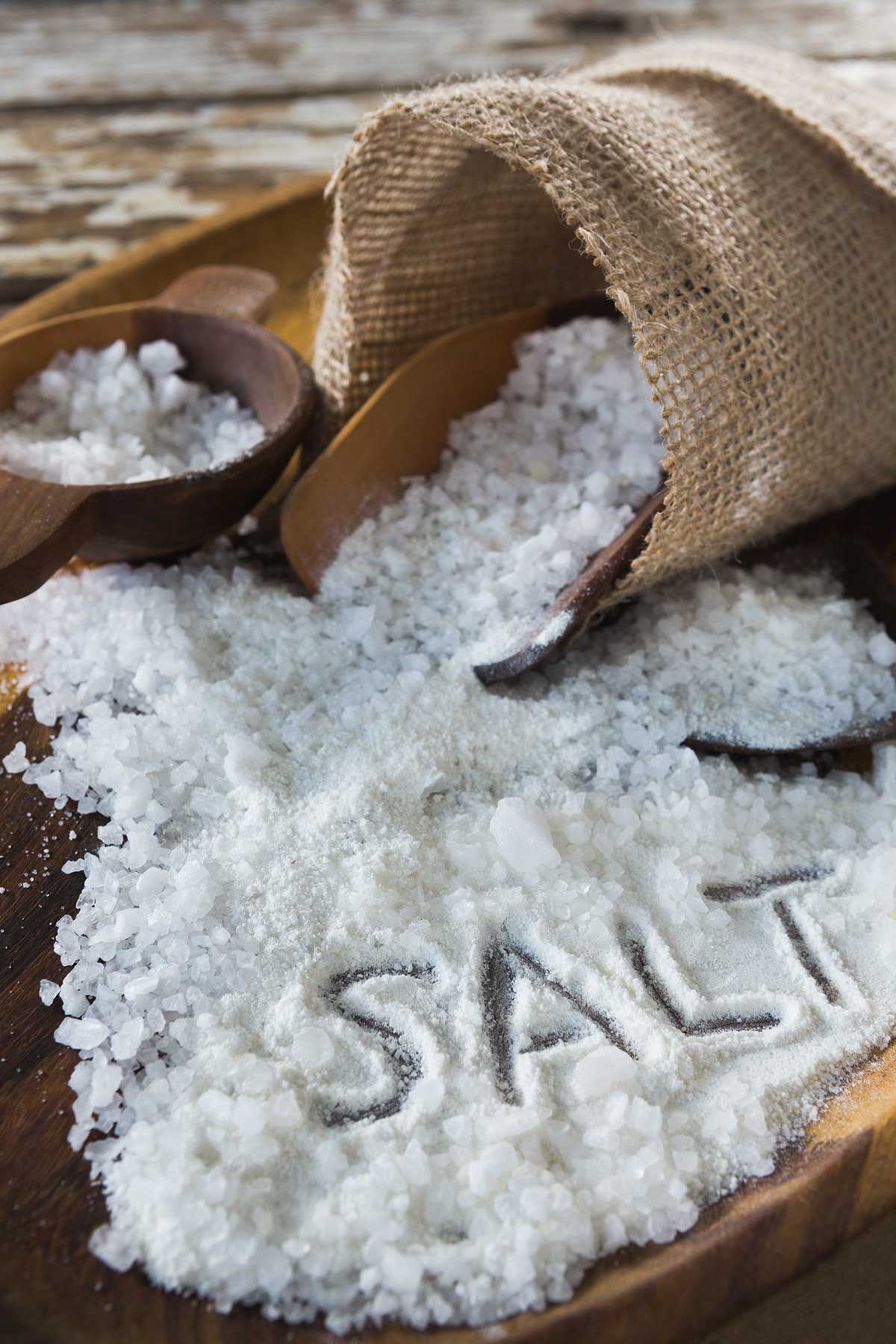
21. Green Salt
Green salts are flavored salts made by combining sea salt with herbs, such as basil or parsley, resulting in a vibrant green color and herbaceous taste.
- Color and appearance: Green salt gets its name from its greenish color, which is derived from the addition of dried herbs or vegetables.
- Flavor: It has a savory taste with herbal and sometimes spicy notes depending on the added ingredients.
- Where it’s found:: Green salt is usually made by combining herbs, vegetables, or spices with regular salt.
- Uses: It is used as a seasoning to enhance the flavor of various dishes like roasted meats, grilled vegetables, and salads.
22. Rock Salt
Rock salt is a type of coarse salt that is mined from underground deposits. It is commonly used for de-icing roads and preserving food.
- Color and appearance: Rock salt is typically large, coarse crystals with an opaque white or slightly pinkish color.
- Flavor: It has a strong and straightforward salty taste.
- Where it’s found: Rock salt is commonly found in underground salt mines or extracted from salt deposits.
- Uses: It is often used for making homemade ice cream or as a deicing agent during winter.
- Unique benefits: Rock salt may contain some minerals but is generally not as rich in trace elements compared to other salts.
23. Finishing Salt
Finishing salt refers to any type of salt used to sprinkle on top of finished dishes just before serving to enhance flavors and add texture.
- Color and appearance: Finishing salts come in various colors including white, gray, pink, or black. The texture can range from fine to coarse flakes or crystals.
- Flavor: The flavor varies depending on the type of finishing salt but generally adds a burst of flavor and texture to dishes.
- Where it’s found: Finishing salts can be found in specialty stores or online retailers that offer gourmet ingredients.
- Uses: It is used as a final touch on cooked dishes or desserts to add visual appeal and enhance flavors.
24. Brining Salts
Brining salts are specifically formulated salts used for brining, the process of soaking meat or poultry in a saltwater solution to enhance flavor and moisture.
- Color and appearance: Can vary depending on the type of brining salt used (e.g., kosher salt, sea salt)
- Flavor: Enhances the flavor of meat or vegetables during the brining process
- Where it’s found: Available in various forms such as coarse, fine, or flavored salts
- Uses: Used in brining to improve flavor, tenderness, and juiciness of meat or vegetables
25. Flavored Salts
Flavored salts are infused with various ingredients like herbs, spices, or citrus zest to add unique flavors to dishes.
- Color and appearance: Varies depending on the type of flavored salt; can range from white to colored or infused with herbs/spices
- Flavor: Infused with various flavors like herbs, spices, citrus zest, or chili flakes
- Where it’s found: Can be purchased commercially or made by infusing salt with desired flavors
- Uses: Adds unique flavors to dishes as a finishing touch; enhances taste without adding extra ingredients
26. Pickling Salt
Pickling salt is a fine-grained salt that dissolves easily in liquid and does not contain any additives that can affect the pickling process.
- Color and appearance: Pickling salt is typically white and finely ground, similar to table salt.
- Flavor: It has a clean, pure taste without any additives or iodine.
- Where it’s found:: Pickling salt is commonly found in the baking aisle or specialty stores.
- Uses: It is primarily used for pickling and preserving vegetables and fruits due to its ability to dissolve quickly.
27. Seasoned Salt
Seasoned salt is a blend of table salt with various seasonings like herbs, spices. If you avoid MSG foods (which you should), then be sure to check lables!
- Color and appearance: Seasoned salt can vary in color depending on the added seasonings but is typically light brown or reddish-brown.
- Flavor: It has a savory flavor with added herbs, spices, and sometimes MSG (monosodium glutamate).
- Where it’s found:: Seasoned salt can be found in most grocery stores or can be made at home by mixing various seasonings with regular table salt.
- Uses: It is commonly used as a seasoning for meats, poultry, vegetables, fries, or snacks like popcorn.
28. Smoked Salt
Smoked salt is made by infusing sea salt with smoke from natural wood chips or other sources, giving it a distinct smoky flavor.
- Color and appearance: Smoked salt ranges from light brown to deep amber or even black depending on the intensity of smoking.
- Flavor: It has a distinct smoky flavor imparted by the smoking process.
- Where it’s found:: Smoked salt can be found in specialty stores or online retailers that offer gourmet ingredients.
- Uses: It is used to add a smoky flavor to various dishes, such as grilled meats, roasted vegetables, or even desserts.
29. Pretzel Salt
Pretzel salt is a large-grained coarse salt that is commonly sprinkled on pretzels before baking to add flavor and texture.
- Color and appearance: Pretzel salt is typically coarse and white, with larger crystals compared to table salt.
- Flavor: It has a mild salty taste that enhances the flavor of pretzels.
- Where it’s found:: Pretzel salt can be found in baking supply stores or online retailers specializing in baking ingredients.
- Uses: It is specifically used for sprinkling on top of pretzels before baking, giving them their distinctive salty flavor.
30. Curing Salt
Curing salt, also known as pink curing salt or Prague powder, is a mixture of table salt and sodium nitrite used in the preservation and curing of meats.
- Color and appearance: Curing salt is usually pink due to the addition of nitrites/nitrates for preserving meat products.
- Flavor: It has a slightly salty taste but is primarily used for its preservation properties rather than flavor enhancement.
- Where it’s found:: Curing salt can be found in specialty food stores or online retailers catering to home curing enthusiasts.
- Uses: It is used for curing and preserving meats like bacon, ham, or sausages by inhibiting bacterial growth and preventing spoilage.
- Unique benefits: Curing salts help extend the shelf life of cured meats by preventing the growth of harmful bacteria like Clostridium botulinum. However, they should be used sparingly due to potential health risks associated with excessive nitrite intake.
31. Epsom Salt
Epsom salt, technically magnesium sulfate, is not intended for consumption but rather used for therapeutic purposes like bath soaks or as a laxative when taken orally.
- Color and appearance: Epsom salt is a white, crystalline powder.
- Flavor: Epsom salt is bitter and not intended for consumption due to its high magnesium content.
- Where it’s found:: It occurs naturally as a mineral compound and is commonly found in mineral springs and underground deposits.
- Uses: Epsom salt is primarily used for therapeutic purposes such as soothing baths, foot soaks, and as a component in skincare products.
- Unique benefits: Epsom salt can help relieve muscle soreness, reduce inflammation, promote relaxation, and improve sleep quality.
Salt Conversion
When it comes to salt conversions, it’s important to understand the differences between table salt, sea salt, flaky salt, coarse salt, and fine salt. Here’s a breakdown of how these different salts can be converted in recipes:
- Table Salt: This is the most common type of salt found in most households and what you will find in a salt shaker at restaurants. It has fine grains and is highly refined. When a recipe calls for table salt, you can use it as-is without any conversion.
- Sea Salt: Sea salt is made by evaporating seawater, resulting in large crystals compared to the fine grains of table salt. If a recipe specifies sea salt and you only have table salt on hand, you can convert it by using about 1 ¼ times the amount of table salt. For example, if a recipe calls for 1 teaspoon of sea salt, you can substitute it with approximately 1 ¼ teaspoons of table salt.
- Flaky Salt: Flaky salt has larger, irregularly shaped flakes that provide a pleasant crunch and burst of flavor when sprinkled on dishes. If a recipe calls for flaky salt and you only have table or sea salt, you can convert it by using about half the amount specified. For instance, if a recipe requires 1 tablespoon of flaky salt, you can substitute it with approximately ½ tablespoon of table or sea salt.
- Coarse Salt: Coarse salt has larger crystals than both table and sea salts. If your recipe calls for coarse salt but all you have is table or sea salt, you can convert it by using about twice the amount specified. For example, if a recipe asks for 2 teaspoons of coarse salt, you can substitute it with approximately 4 teaspoons of table or sea salt.
- Fine Salt: Fine salt has smaller grains than both table and sea salts. If your recipe specifies fine salt but all you have is table or sea salt, you can convert it by using about three-quarters (¾) of the amount specified. For instance, if a recipe calls for 1 tablespoon of fine salt, you can substitute it with approximately ¾ tablespoon of table or sea salt.




